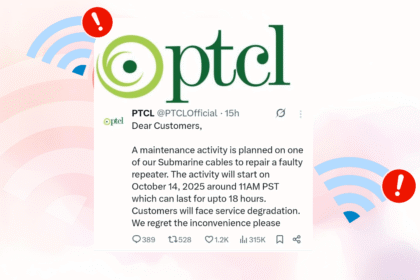A single monsoon storm in Karachi on August 19 exposed the fragility of Pakistan’s digital backbone, plunging millions across the country into a nationwide connectivity crisis.
The heavy downpour disrupted power supplies and flooded streets, cutting off fuel access to telecom towers. While some solar-powered towers remained online, most collapsed as generators failed. Within hours, internet connectivity crashed to just one-fifth of normal, hitting major operators including PTCL, Ufone, Jazz, Zong, and Telenor.
Read more: Why Did Pakistan’s Internet Suddenly Drop to 20%?
By evening, businesses, banks, schools, hospitals, and freelancers were crippled. Digital rights groups called the disruption a “national failure,” warning that two-thirds of the country going dark on the same date as a similar 2022 outage should “ring alarm bells.” With more than 116 million users, the economic toll is estimated in the billions.
Experts stressed that Pakistan’s dependence on Karachi’s submarine cable hubs and centralized networks magnified the crisis. As one user in Lahore remarked, “We had electricity but no internet. Why should rain in Karachi shut us down here?”
Read more: Pakistan Moves Toward Regulating Satellite Internet
Although PTCL and the Pakistan Telecommunication Authority announced full restoration within 24 hours, complaints of sluggish speeds and outages lingered for days. Users from Karachi to Quetta reported that the recovery on paper did not match the reality on the ground.
Telecom associations and digital rights activists are now urging structural reforms: diversifying cable landing stations beyond Karachi, expanding solar and battery-backed towers, and building flood-resistant data centers. Without such measures, experts warn, every monsoon season risks silencing Pakistan’s digital lifeline.






